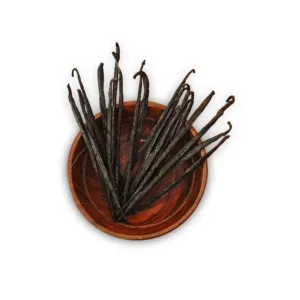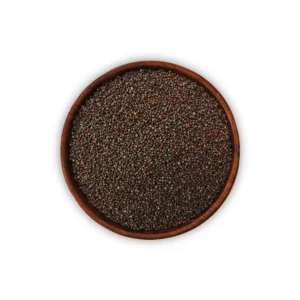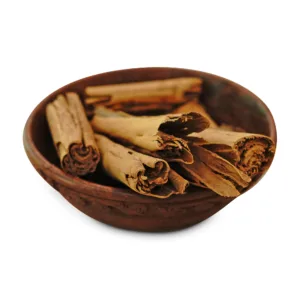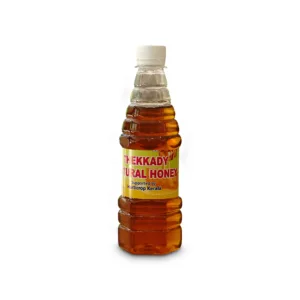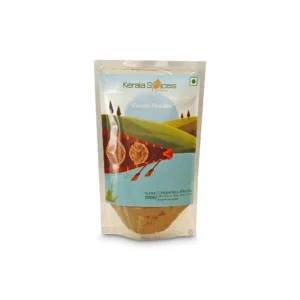The Health Benefits of Kokum: What You Need to Know
Kokum, also known as Garcinia indica, is a tropical fruit that is highly regarded for its health benefits. Native to the Western Ghats region of India, kokum has been used for centuries in traditional medicine and culinary practices. In recent years, it has gained popularity worldwide for its nutritional properties and potential health advantages. In this article, we will delve into the various health benefits of kokum and provide insights on where to buy kokum online, particularly focusing on its availability and kudampuli price in Kerala.
What is Kokum?
Kokum is a small, round fruit that grows on the kokum tree, scientifically known as Garcinia indica. It has a unique appearance, resembling a miniature pumpkin with a reddish-purple exterior. The fruit’s skin is typically dried and used in various forms, such as dried rinds, kokum juice, extracts, and even supplements. Known for its tangy and slightly sour taste, kokum is a popular ingredient in many regional dishes, imparting a distinct flavor profile.
Where is Kokum Found?
Kokum is primarily found in the Western Ghats region of India and you can also find kokum online anywhere in india, encompassing states like Maharashtra, Goa, and Karnataka. The warm and humid climate of these regions provides an ideal environment for the growth of kokum trees. The fruit ripens during the summer months, transforming into a deep purple hue. While kokum has long been a staple in the local cuisine of these areas, its availability has expanded, allowing people from different parts of the world to enjoy its unique flavors and reap its health benefits.
Nutritional Benefits of Kokum:
Kokum offers a wide array of nutritional benefits, making it a valuable addition to a healthy diet. It is rich in antioxidants, including garcinol and hydroxycitric acid (HCA), which are known for their potential health-promoting properties. These antioxidants help combat oxidative stress and protect the body against harmful free radicals. Kokum also contains essential vitamins, such as vitamin C and various B-complex vitamins, along with minerals like potassium, magnesium, and manganese.

What are the nutritional components of Kokum?
Kokum is a fruit that boasts an impressive array of nutritional components, which contribute to its health benefits. Let’s take a closer look at the key nutritional components of kokum:
Garcinol: Garcinol is a potent antioxidant found in kokum. It has been studied for its Anti-inflammatory, anti-cancer, and antimicrobial properties. This compound helps protect the body against oxidative stress and supports overall health.
Hydroxycitric Acid (HCA): HCA is a prominent component of kokum and is widely known for its potential effects on weight management. It may help suppress appetite, inhibit fat production, and promote fat metabolism, making it a popular ingredient in weight loss supplements.
Vitamin C: Kokum is a rich source of vitamin C, also known as ascorbic acid. Vitamin C is a powerful antioxidant that supports immune function, collagen synthesis, wound healing, and protection against various diseases.
B-Complex Vitamins: Kokum contains several B-complex vitamins, including thiamine (B1), riboflavin (B2), niacin (B3), and folate (B9). These vitamins play essential roles in energy production, brain function, DNA synthesis, and cell metabolism.
The nutritional components found in kokum contribute to a wide range of health benefits. Let’s explore the health benefits associated with these components:
Antioxidant and Anti-inflammatory Properties: The presence of garcinol and vitamin C in kokum provides powerful antioxidant and anti-inflammatory effects. These properties help protect the body’s cells from damage caused by free radicals and reduce inflammation, which is linked to various chronic diseases, including heart disease, arthritis, and certain types of cancer.
Weight Management: Kokum’s hydroxycitric acid (HCA) content has been studied for its potential effects on weight management. HCA may help suppress appetite, reduce food intake, and inhibit the conversion of excess carbohydrates into fat. Incorporating kokum into a balanced diet and active lifestyle may support healthy weight loss or weight maintenance goals.
Digestive Health: Kokum is known for its digestive benefits. The dietary fiber present in kokum aids in smooth digestion, prevents constipation, and promotes regular bowel movements. It can also help soothe digestive discomforts like bloating and indigestion.
Immune System Support: Vitamin C is a key nutrient for immune system function. Kokum’s vitamin C content helps strengthen the immune system, enhances the production of white blood cells, and aids in the body’s defense against infections and illnesses.
How can Kokum help with digestion?
Kokum is widely recognized for its beneficial effects on digestion. Here are some ways in which kokum can help promote healthy digestion:
Stimulates Digestive Enzymes: Kokum contains compounds such as citric acid, acetic acid, malic acid, and ascorbic acid, which help stimulate the production of digestive enzymes. These enzymes aid in the breakdown of food and facilitate the absorption of nutrients, ensuring efficient digestion.
Reduces Acidity and Indigestion: Kokum has traditionally been used as a natural remedy for acidity and indigestion. It helps neutralize excessive stomach acid and provides relief from symptoms like heartburn, bloating, and discomfort.
Supports Healthy Gut Flora: Kokum possesses antimicrobial properties that help maintain a healthy balance of beneficial bacteria in the gut. These beneficial bacteria, known as probiotics, play a crucial role in digestion, nutrient absorption, and overall gut health.
Can Kokum be used to reduce inflammation?
Yes, kokum possesses anti-inflammatory properties that can help reduce inflammation in the body. The active compounds found in kokum, such as garcinol and hydroxycitric acid (HCA), contribute to its anti-inflammatory effects. Here’s how kokum can be beneficial in reducing inflammation:
Anti-inflammatory Action: The presence of garcinol in kokum exhibits potent anti-inflammatory properties. It helps inhibit the activity of pro-inflammatory enzymes, such as cyclooxygenase (COX) and lipoxygenase (LOX), which are involved in the production of inflammatory compounds in the body. By reducing the levels of these enzymes, kokum can help alleviate inflammation.
Relieves Joint Pain: Inflammatory conditions like arthritis and joint pain are often associated with chronic inflammation. The anti-inflammatory properties of kokum can help reduce joint pain and inflammation, providing relief to individuals suffering from such conditions.
Skin Inflammation: Topical application of kokum butter or kokum oil can help soothe skin inflammation caused by conditions like eczema, dermatitis, or insect bites. The anti-inflammatory properties of kokum can help calm the skin and reduce redness, itching, and swelling.
What are some other potential health benefits of Kokum?
In addition to its digestive and anti-inflammatory properties, kokum offers several other potential health benefits. These include:
Antioxidant Effects: Kokum is rich in antioxidants, including vitamin C, which helps neutralize harmful free radicals in the body. Antioxidants play a crucial role in protecting cells from oxidative stress and reducing the risk of chronic diseases.
Weight Management: Kokum is often associated with weight management due to its potential to suppress appetite and inhibit fat storage. It contains HCA, which may help reduce cravings and promote satiety, leading to controlled food intake and potential weight loss.
Blood Sugar Regulation: Preliminary studies suggest that kokum may have a positive impact on blood sugar levels. It may help regulate insulin response, improve glucose metabolism, and maintain stable blood sugar levels.
Kokum and Weight Loss
How can Kokum help with weight loss?
Kokum can potentially aid in weight loss due to its unique properties. Here’s how kokum can be beneficial for weight management:
Appetite Suppressant: Kokum contains hydroxycitric acid (HCA), which has been found to have appetite-suppressing effects. HCA can help reduce cravings and suppress the desire to overeat, promoting a calorie deficit necessary for weight loss.
Fat Metabolism: HCA in kokum may help inhibit an enzyme called citrate lyase, which plays a role in converting excess carbohydrates into fat. By blocking this enzyme, kokum may help prevent fat accumulation and promote the utilization of stored fat for energy.
Energy Boost: Kokum’s ability to enhance energy levels can be beneficial during weight loss efforts. By providing a natural energy boost, kokum can support increased physical activity and exercise, aiding in burning calories and promoting weight loss.
What are some tips for incorporating Kokum into a weight loss regimen?
If you’re considering incorporating kokum into your weight loss regimen, here are some tips to make the most of its potential benefits:
Kokum Juice: Prepare kokum juice by soaking dried kokum rinds in water overnight. Strain the liquid and consume it in the morning on an empty stomach. This can help kickstart your metabolism and promote weight loss.
Use Kokum in Cooking: Add kokum to your cooking to impart a tangy flavor to dishes. It can be used in curries, dals, soups, or even salads. The tanginess of kokum can enhance the taste of low-calorie meals and make them more satisfying.
Using Kokum in Cooking
How is Kokum typically used in cooking?
Kokum is a versatile ingredient used in various culinary traditions, particularly in coastal regions of India like Kerala. Here’s how kokum is typically used in cooking:
Tangy Flavoring Agent: Kokum imparts a tangy and slightly sour flavor to dishes, making it a popular ingredient in curries, dals, and gravies. It adds a unique taste that complements spicy and savory preparations.
Fish and Seafood: Kokum is frequently used in seafood-based dishes, where it adds a refreshing tang and balances the richness of fish or prawns. It enhances the overall flavor profile of dishes like fish curry or shrimp curry.

Are there any recipes that incorporate Kokum?
Certainly! Kokum is a versatile ingredient that can be used in various recipes to add a tangy flavor. Here are a few popular recipes that incorporate kokum:
Kokum Curry: In coastal regions of Kerala, kokum curry is a traditional dish. It is prepared by combining soaked kokum with coconut milk, spices, and vegetables like pumpkin or okra. This tangy and creamy curry is typically served with rice.
Fish Curry with Kokum: Kokum is often used in fish curries to enhance the flavor. Fish pieces are cooked in a spicy coconut-based gravy along with kokum, creating a delicious and tangy dish that pairs well with steamed rice.
Kokum Chutney: Kokum chutney is a tangy and spicy condiment made by blending soaked kokum with spices like chili, garlic, and ginger. It can be enjoyed with snacks, dosas, or used as a dip for various dishes.
Kokum Sherbet: During hot summer months, kokum sherbet is a refreshing beverage made by mixing kokum syrup with water, sugar, and a hint of spices. It is a popular thirst quencher in coastal regions of India.
These are just a few examples, and kokum can be used creatively in various other dishes, including soups, pickles, and desserts. Its tangy flavor adds a unique twist to both vegetarian and non-vegetarian preparations.
FAQ
Yes, kokum is safe for consumption when used in moderate amounts as part of a balanced diet. However, it’s always advisable to consult with a healthcare professional or a registered dietitian if you have any specific health concerns or medical conditions.
Kokum has a distinct tangy flavor, and while it can add a unique taste to dishes, it may not always be a direct substitute for other ingredients. Its flavor profile is not easily replicated by other ingredients. However, if you’re looking for a sour element in a recipe, you can explore alternatives like tamarind or lemon juice.
Kokum is commonly available in coastal regions of India, especially in Kerala and Goa. It can be found in local markets, grocery stores, or spice shops. Additionally, you can also find kokum online, where various vendors offer dried kokum or kokum products like kokum syrup or kokum supplements.
The recommended amount of kokum consumption may vary depending on individual factors such as age, overall health, and specific health goals. It’s best to consult with a healthcare professional or a registered dietitian to determine the appropriate quantity for your specific needs.
Kokum has been traditionally used in Ayurveda for its potential medicinal properties. It is believed to have digestive, anti-inflammatory, and antioxidant properties. However, it’s important to note that scientific research on kokum’s medicinal benefits is still limited. If you’re considering using kokum for specific health purposes, it’s recommended to consult with a healthcare professional or an Ayurvedic practitioner for guidance.
Conclusion
In conclusion, kokum is a versatile ingredient known for its tangy flavor and potential health benefits. It is rich in antioxidants, essential nutrients, and has properties that may aid digestion, reduce inflammation, and support weight loss efforts. Kokum can be incorporated into various recipes, including curries, chutneys, sherbets, and more, adding a unique and refreshing twist to your meals. While kokum is generally safe for consumption, it’s important to use it in moderation and seek professional advice if you have any concerns or specific health conditions. So go ahead, explore the world of kokum, and enjoy its flavorsome and health-promoting properties.


